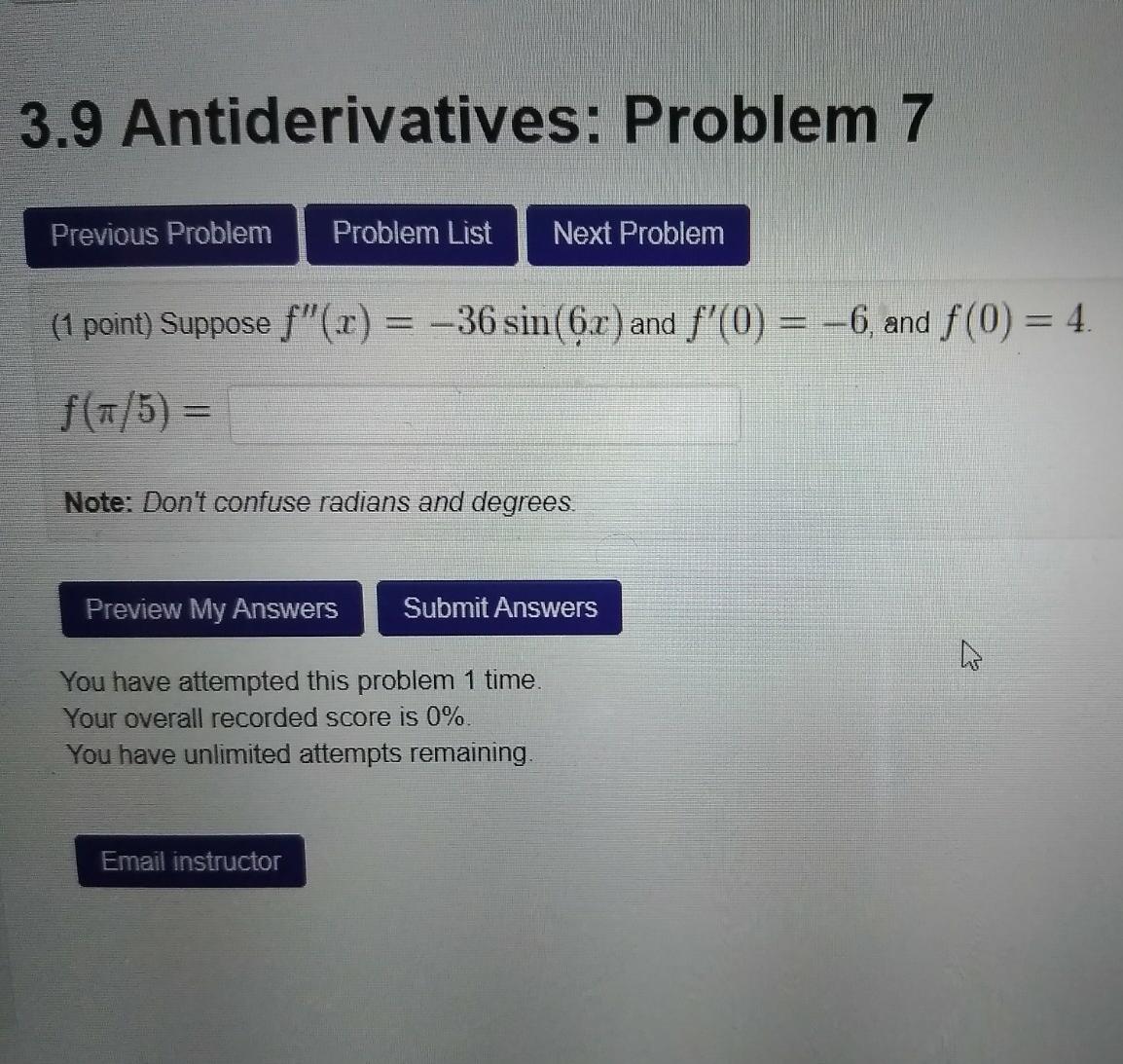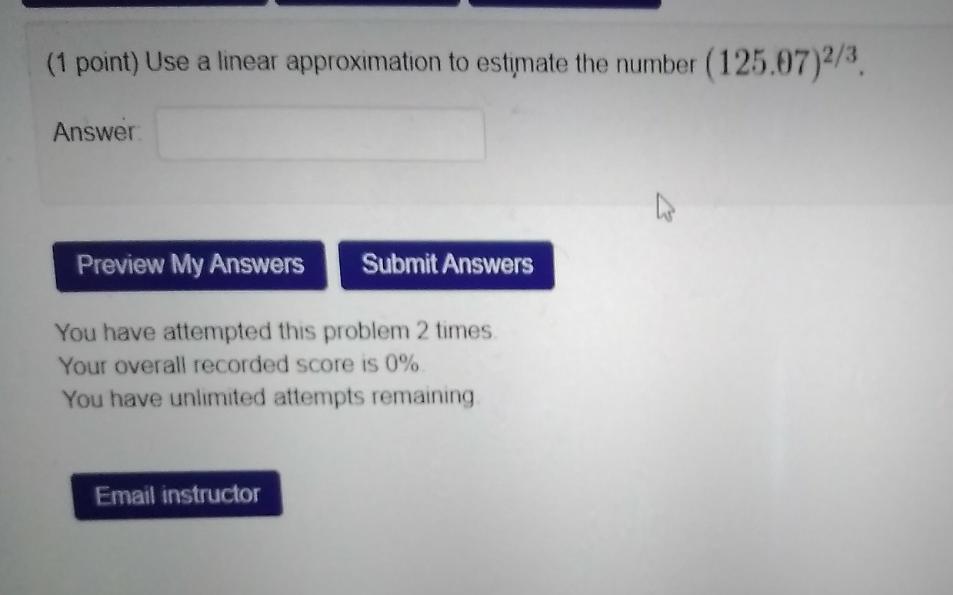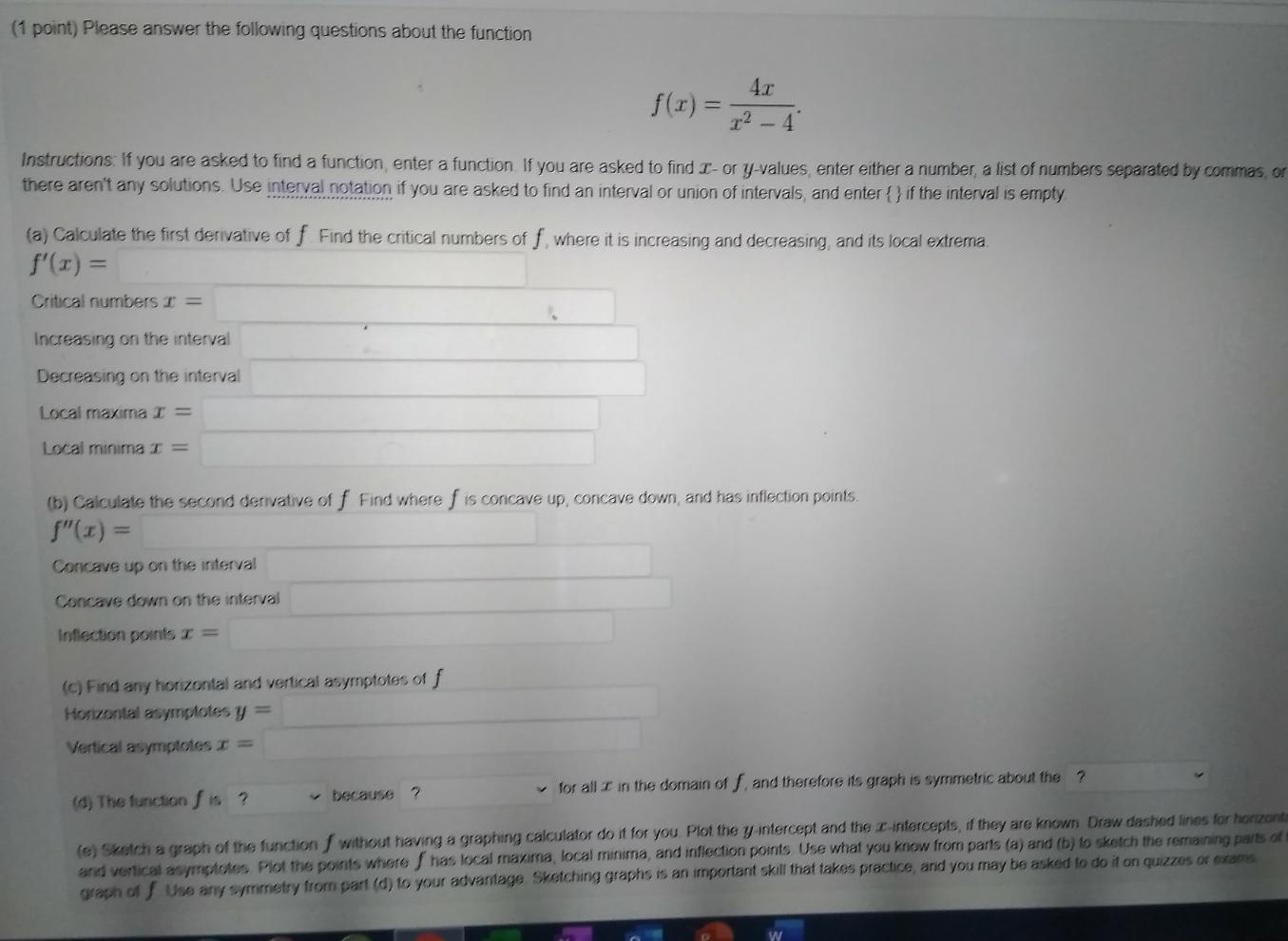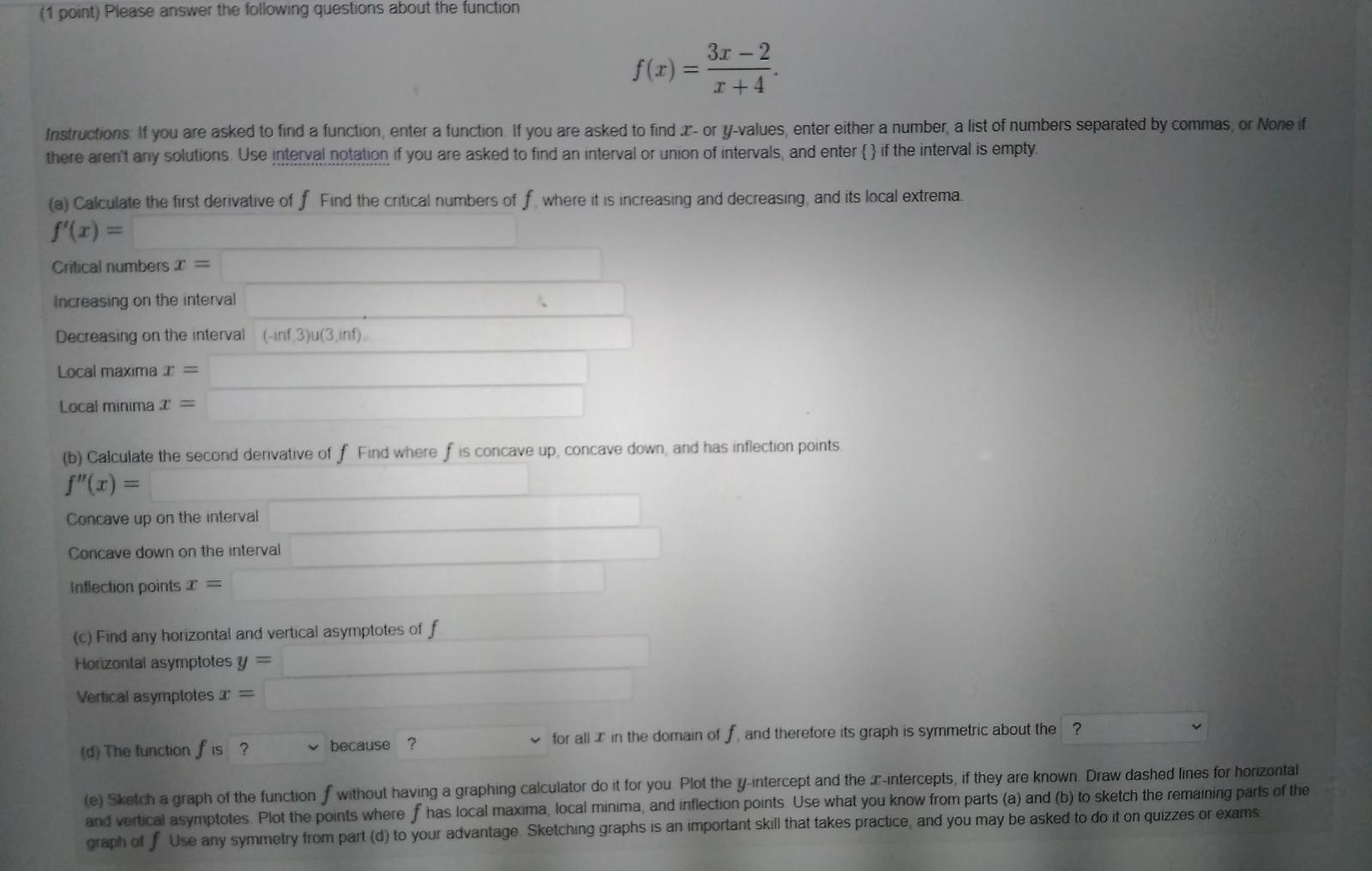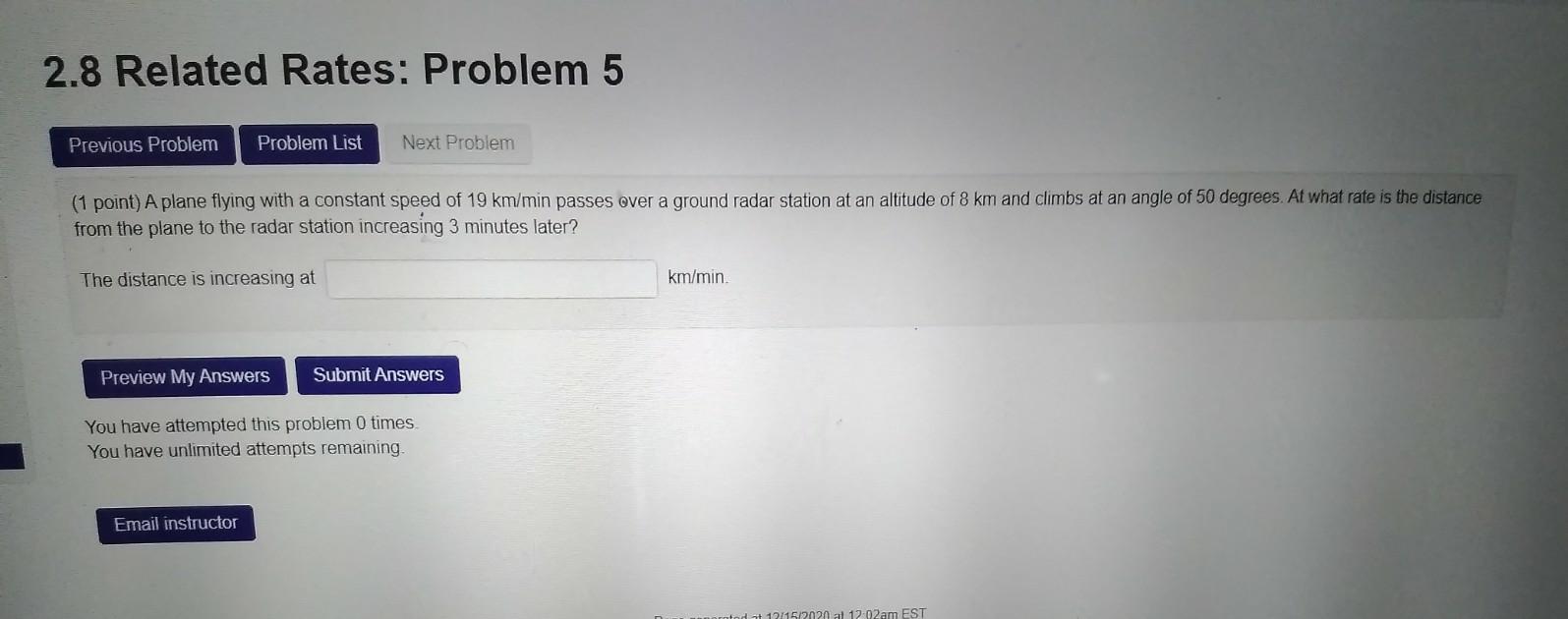Please see questions in photos attched
3.9 Antiderivatives: Problem 7 Previous Problem Problem List Next Problem (1 point) Suppose f"(x) = -36 sin (6.x) and f'(0) = -6, and f (0) = 4. f ( 7/5) = Note: Don't confuse radians and degrees. Preview My Answers Submit Answers You have attempted this problem 1 time. Your overall recorded score is 0% You have unlimited attempts remaining Email instructor(1 point) Use a linear approximation to estimate the number ( 125.07) 2/3. Answer Preview My Answers Submit Answers You have attempted this problem 2 times Your overall recorded score is 0% You have unlimited attempts remaining Email instructor2.9 Linear Approximations and Differentials: Problem 1 Previous Problem Problem List Next Problem (1 point) The linearization at a = 0to V 7 + 6. is A + Bar. Compute A and B A = B = Note: You can earn partial credit on this problem. Preview My Answers Submit Answers You have attempted this problem 2 times Your overall recorded score is 0% You have unlimited attempts remaining. Email instructor(1 point) Please answer the following questions about the function Ar f (x) = - 72 - 4 Instructions: If you are asked to find a function, enter a function If you are asked to find I- or y-values, enter either a number, a list of numbers separated by commas, or there aren't any solutions. Use interval notation if you are asked to find an interval or union of intervals, and enter { } if the interval is empty (a) Calculate the first derivative of f Find the critical numbers of f, where it is increasing and decreasing, and its local extrema f'(x) = Critical numbers I = Increasing on the interval Decreasing on the interval Local maxima I = Local minima I = (b) Calculate the second derivative of f Find where f is concave up, concave down, and has inflection points, f" ( I ) = Concave up on the interval Concave down on the interval Inflection points I = (c) Find any horizontal and vertical asymptotes of f Horizontal asymptotes y = Vertical asymptotes I = () The function / is ? because ? " for all I in the domain of f, and therefore its graph is symmetric about the ? (e) Sketch a graph of the function / without having a graphing calculator do it for you Plot the y intercept and the a intercepts, if they are known Draw dashed lines for horizont arid vertical asymptotes Plot the points where ) has local maxima, local minima, and inflection points Use what you know from parts (a) and (b) to sketch the remaining parts of graph of / Use any symmetry from part (d) to your advantage Sketching graphs is an important skill that takes practice, and you may be asked to do it on quizzes or exams(1 point) Please answer the following questions about the function f (x) = - 3x - 2 r +4 Instructions If you are asked to find a function, enter a function. If you are asked to find a- or y-values, enter either a number, a list of numbers separated by commas, or None if there aren't any solutions, Use interval notation if you are asked to find an interval or union of intervals, and enter { } if the interval is empty. (a) Calculate the first derivative of f Find the critical numbers of f, where it is increasing and decreasing, and its local extrema. f'(x) = Critical numbers I = Increasing on the interval Decreasing on the interval (-inf 3)u(3,inf) Local maxima I = Local minima = (b) Calculate the second derivative of f Find where f is concave up, concave down, and has inflection points f"(x) = Concave up on the interval Concave down on the interval Inflection points r = (c) Find any horizontal and vertical asymptotes of f Horizontal asymptotes y = Vertical asymptotes I = (d) The function f is ? because ? for all I in the domain of f, and therefore its graph is symmetric about the ? (e) Sketch a graph of the function / without having a graphing calculator do it for you Plot the y-intercept and the I-intercepts, if they are known Draw dashed lines for horizontal and vertical asymptotes. Plot the points where f has local maxima, local minima, and inflection points. Use what you know from parts (a) and (b) to sketch the remaining parts of the graph of f Use any symmetry from part (d) to your advantage. Sketching graphs is an important skill that takes practice, and you may be asked to do it on quizzes or exams2.8 Related Rates: Problem 5 Previous Problem Problem List Next Problem (1 point) A plane flying with a constant speed of 19 km/min passes over a ground radar station at an altitude of 8 km and climbs at an angle of 50 degrees. At what rate is the distance from the plane to the radar station increasing 3 minutes later? The distance is increasing at km/min. Preview My Answers Submit Answers You have attempted this problem 0 times You have unlimited attempts remaining Email instructor
